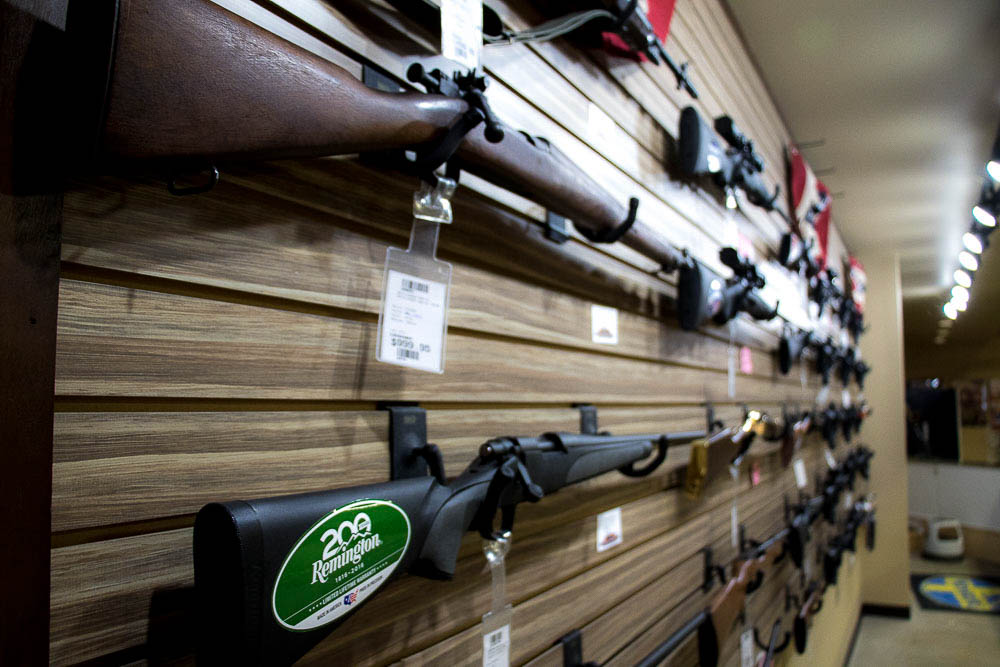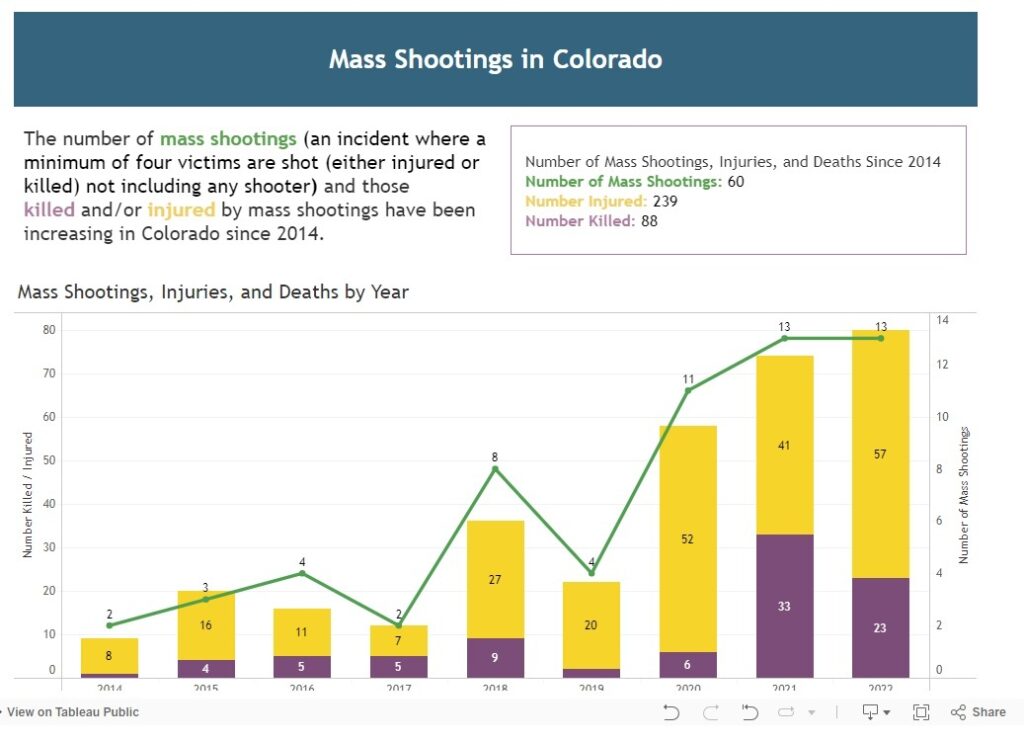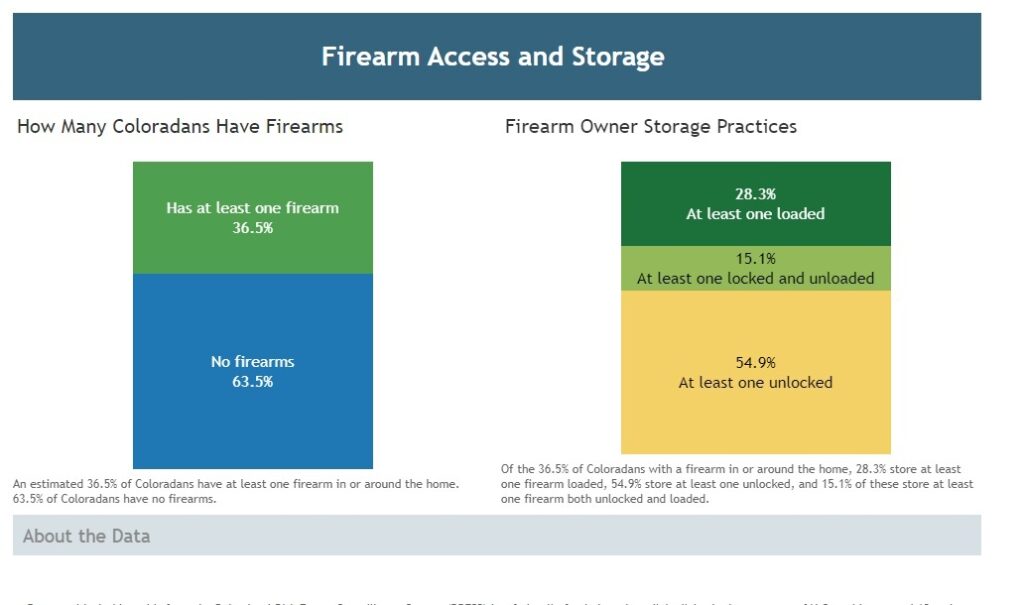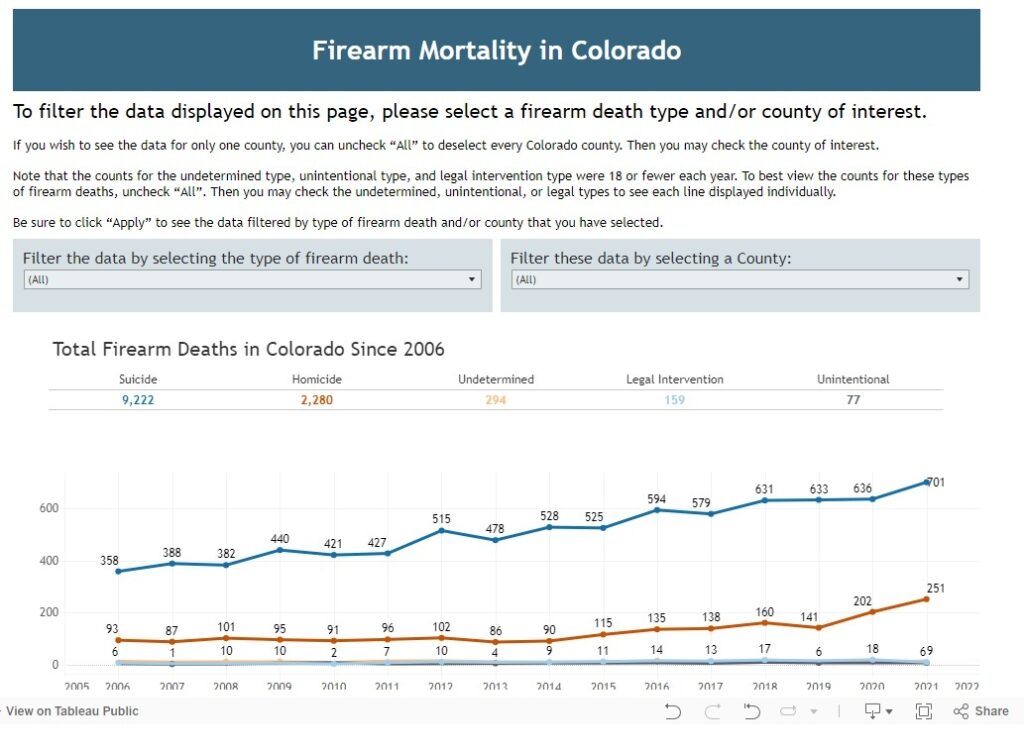
For the first time, data about gun violence and use in Colorado has been gathered in one place so people can see the stark numbers.
Since 2014, Colorado has endured 60 mass shootings that killed 88 people and injured 239. In 2022 alone, there were 13 mass shootings, with 33 killed and 41 injured.
In 2021, Colorado recorded 701 suicides and 251 homicides, adding to firearm figures that have been climbing since at least 2006.
More people in Colorado are using extreme risk protection orders, essentially a red flag the public can raise to alert law enforcement that someone with guns is threatening to hurt themselves and/or others.
As part of a concerted prevention push from the state, including a resource hub, that data can be found on a new online dashboard,
Beyond mass shootings, which generate a lot of media and public attention, gun deaths have steadily increased in Colorado for more than a decade, according to the state health department and reflected on the dashboard.
During that time, state leaders and community advocates have worked to fight the trend.
Now they’re turning to a new avenue — a public health approach to gun violence prevention.
The push comes from a partnership between the Office of Gun Violence Prevention within the Colorado Department of Public Health and Environment and the Injury and Violence Prevention Center in the Colorado School of Public Health.
The hub is known as the Colorado Gun Violence Prevention Resource Bank. It intends to provide information to “diverse audiences ranging from researchers to the general public,” according to a press release from the health department.
The dashboard includes data on firearm mortality, mass shootings, extreme risk protection orders, firearm sales data, and firearm access and storage.

A Colorado in Context section compares state data with national data. It notes that from 2018-21, Colorado had a higher rate of firearm deaths and suicides but a lower rate of firearm homicides compared to the United States.
The Firearm Access and Storage page shows nearly 64 percent of Coloradans have no firearms, with almost 37 percent having at least one. Of those with a firearm in or around the home, 28 percent store at least one firearm loaded, and more than half store at least one unlocked. Fifteen percent store at least one firearm both unlocked and loaded.

The hub follows on the heels of earlier efforts to raise awareness of safety, including through the Colorado Gun Shop Project, a coalition working to get the suicide prevention message out to gun owners.
The state health department said the new hub is a pivotal step.
“The first step to solving an issue using a public health approach is to thoroughly understand the scope of the problem through data,” said Jonathan McMillan, the former director of CDPHE’s Office of Gun Violence Prevention. “This resource bank will prove invaluable to anyone interested in being part of the solution and working to prevent firearm-related harms within their own community."
McMillan took the post in 2022. On Wednesday, he announced that he was stepping down, but didn’t explain why or what he planned to do next.
According to the Colorado Vital Statistics Program, between 2016-21, an average of 911 people in Colorado died each year due to guns. In 2021, Colorado ranked 18th in the United States for firearm-related deaths.

The resource bank and dashboard plan to expand to include additional information, resources, and data, according to CDPHE.
“The Injury and Violence Prevention Center is pleased to support the Office of Gun Violence Prevention in the continual advancement of the resource bank,” said Ashley Brooks-Russell, PhD, director of the Injury and Violence Prevention Center in the release. It describes the effort as a collaborative initiative of the Colorado School of Public Health and the University of Colorado School of Medicine at the CU Anschutz Medical Campus.
“As an organization that works to reduce firearm injury and its outcomes through high-quality research, education, and practice, we are committed to ensuring that the resource bank's growth is aligned with community needs,” Brooks-Russell said.
“I hope the information will be useful for all types of Coloradans – from policy-makers to the general public – in understanding what gun violence looks like in our state and how we can prevent firearm-related physical and psychological harm,” said Dr. Emmy Betz, an ER doctor who serves as deputy director of the Injury and Violence Prevention Center.









